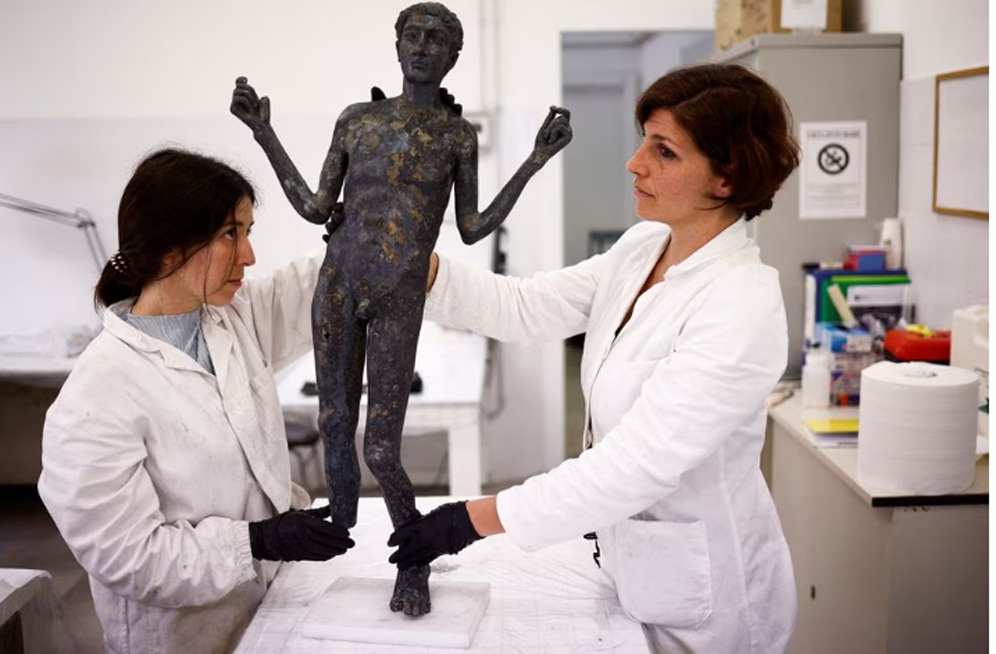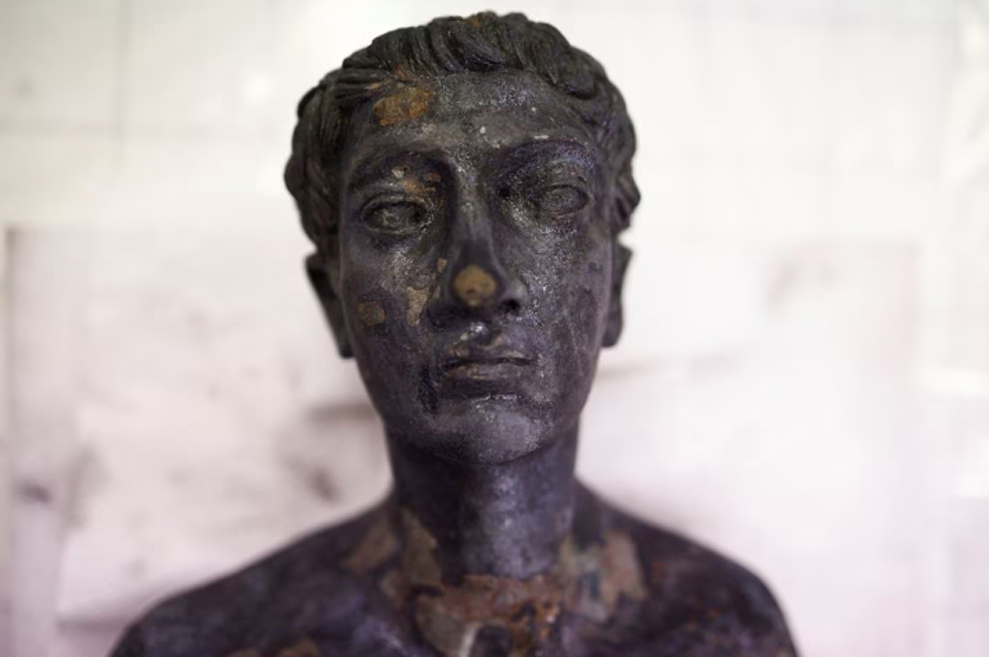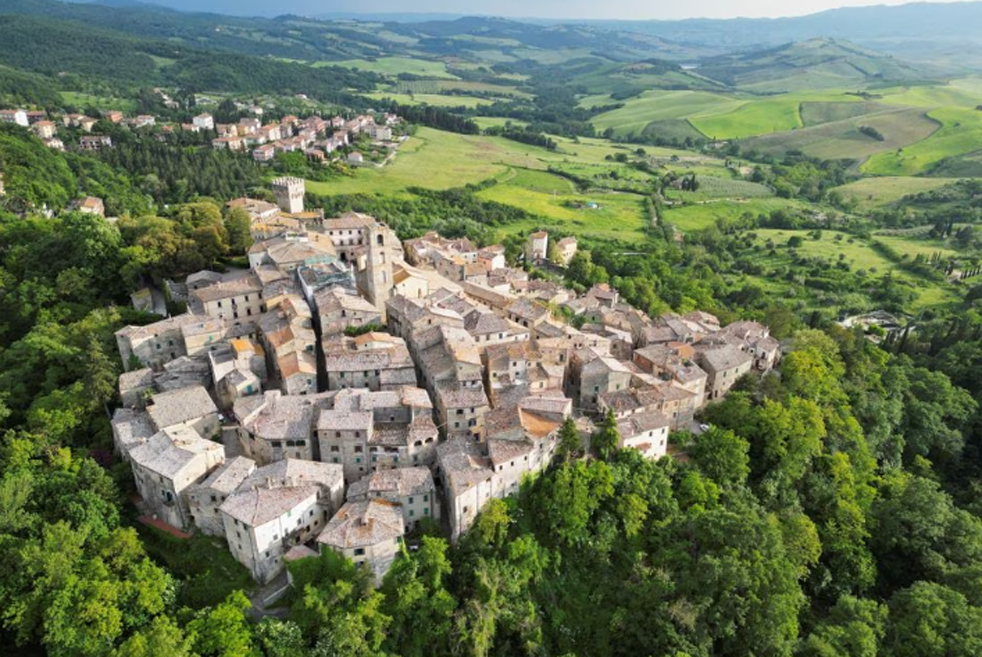Garbage collector helps unearth ancient bronze statues of the 3rd century BC
One of Italy’s most remarkable archaeological finds in decades on display in June 2023 are statues of the Etruscan and Roman civilizations, pulled from the mud in Tuscany, thanks in part to intuition. of a retired garbage collector.
Some 20 bronze statues from the 3rd century BC to the 1st century AD, retrieved from the ruins of an ancient spa, will be on display at the Quirinale Palace, Rome from June 22, after much restoration month.
90 cm high bronze statue
When the discovery was announced in November 2022, experts called it the largest collection of antique bronze statues ever found in Italy and called it a breakthrough to “rewrite history”.
The statues were found in 2021 and 2022 in a hilltop village of San Casciano dei Bagni, home to famous natural hot tubs that archaeologists had long suspected might have been discovered. ancient ruins.
However, initial attempts to locate them were unsuccessful.
The details are still very clear on the face of the “thin boy” statue.
REUTERS
San Casciano Mayor Agnese Carletti told Reuters excavations began in 2019 on a small site next to the village’s Renaissance public baths, but weeks of excavations revealed “only traces of some walls”.
The treasure was discovered by local amateur archaeologist and retired garbage collector Stefano Petrini. He said there was “a flash of intuition” and remembered that many years earlier he had seen fragments of ancient Roman columns on the wall on the other side of the public bath. And these pillars can only be seen from an abandoned garden that once belonged to his friend the late veggie vendor in San Casciano, who grew fruit and vegetables there for sale in a store.
Restorer Laura Rivaroli works on a bronze statue of Apollo
REUTERS
When Petrini took the archaeologists there, they knew they had found the right place.
“It all started there, from the pillars,” said Petrini.
Emanuele Mariotti, head of the archeology project San Casciano, said his team was “quite desperate” before receiving information that led to the discovery of a temple at the heart of the ancient spa complex.
The statues found there were offerings by the Romans and Etruscans, as they looked to the gods for good health. Coins and sculptures of body parts such as ears and legs were also found from the site.
One of the most spectacular finds is a bronze statue of a “thin boy”, about 90cm tall, of a Roman young man suffering from rickets.
“The statue emerged from the mud although it was partially covered. After being cleaned and looked closely, it was clear that it was a statue of a sick person,” archaeologist Ada Salvi of the Italian Ministry of Culture confirmed, co. traces of more unusual offerings have also been found, including eggshells, pinecones, peach and plum seeds, surgical instruments, and a 2,000-year-old curl of hair.
“The statues open an opportunity to learn more about the Romans and Etruscans, about the connection between health, religion and spirituality,” says Salvi.
Hoping to unearth many treasures
The temple was sealed in the early 5th century AD, when the ancient spa complex was abandoned, leaving statues over the centuries.
The hilltop village of San Casciano dei Bagni
REUTERS
Excavation work will resume at the end of June 2023. Mariotti said there will be “certainly” more statues to be found in the coming years, possibly even another six or 12 of which an inscription is attributed to Marcius Grabillo.
“We just opened the treasure chest,” said Mariotti.
After the exhibition in Rome, the statues and other artefacts will be moved to a new home in the museum that authorities hope to open in San Casciano in the next few years.
Stefano Petrini hopes the treasure will bring “jobs, culture and knowledge” to his village of 1,500 people, which is struggling with the same population decline as much of rural Italy. He humbly said: “Discovering the ancient bronze statue thanks to many people, never thanks to just one person. Never”.
Related Post
The entire tomb is filled with signs and symbols that mention Queen Nefertiti and after some time passed and linguistic experts managed to decipher the stories told here, the team was baffled.
The mystery of the Solar Temple of Abu Gurab and its “Star Gate” comes to light
Thuya, the mother of Queen Tiye, left a monumental legacy by becoming the grandmother of Akhenaten and Tutankhamun.
The oldest traditions lead us to believe that blacks were the first inhabitants of Mexico.
The REAL face of King Tut: The pharaoh had feminine hips, clubfoot, and protruding teeth according to the ‘virtual autopsy,’ which also revealed that his parents were brother and sister.
The “oldest gold of humanity” was found in the Varna necropolis, on the Bulgarian Black Sea coast



